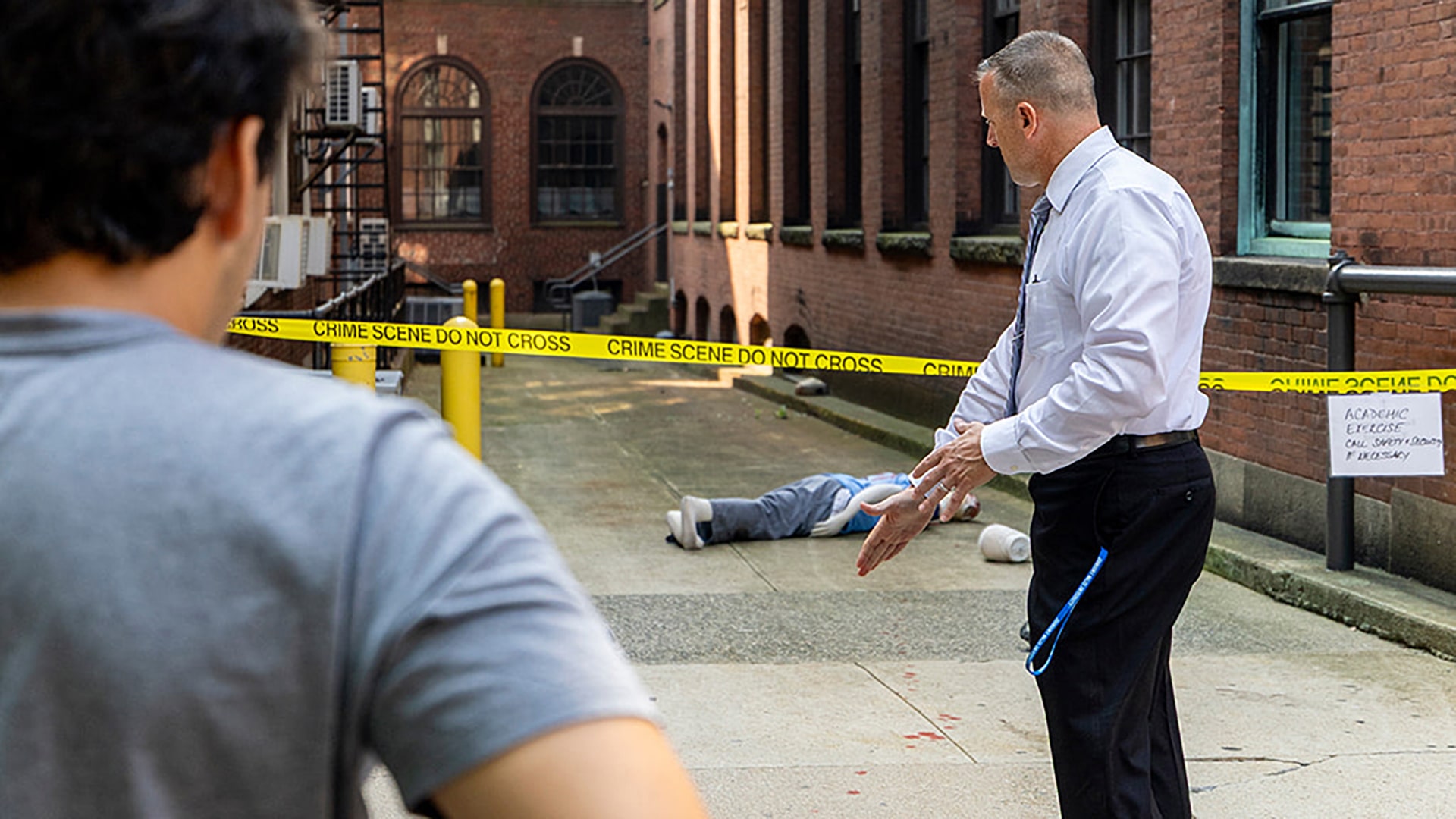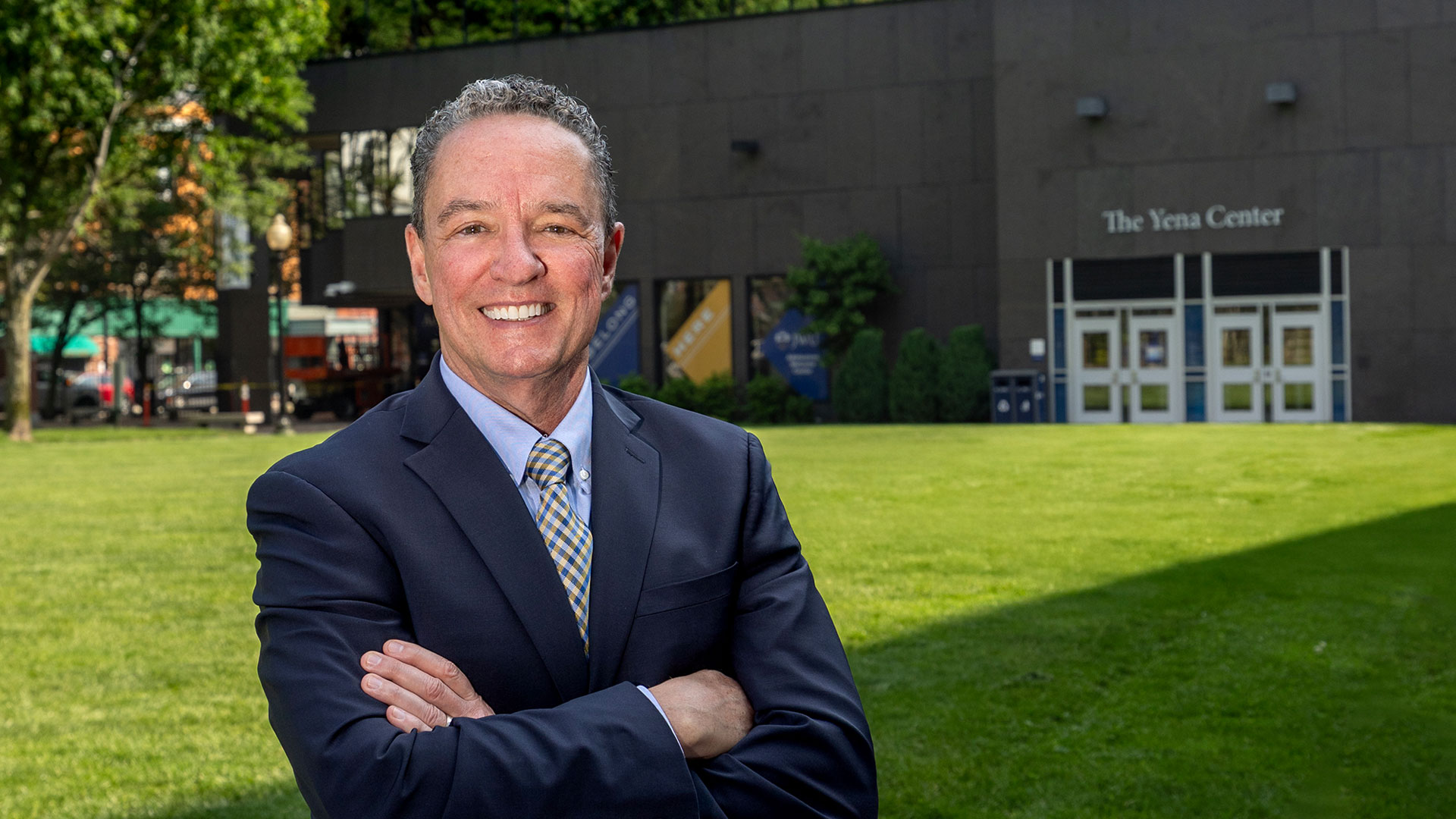Enhancing Student Learning at JWU During the Pandemic
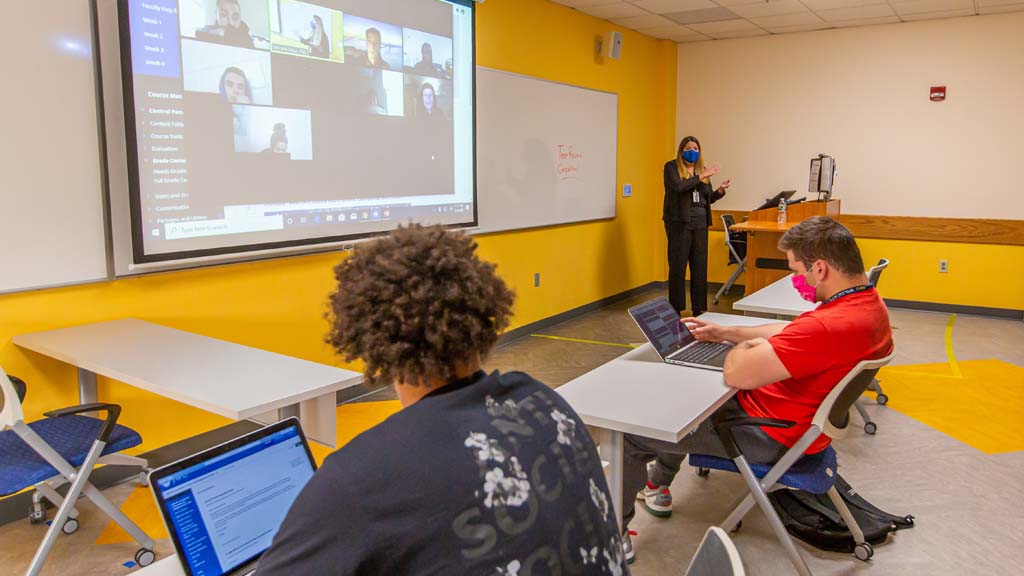
At a time when it’s more important than ever to engage students in the classroom, Johnson & Wales faculty are keeping their lessons flexible to accommodate for synchronous and asynchronous teaching that can happen in person, virtually or both. Their efforts are paying off — students are getting the best of both worlds.
Michelle Rego, Ph.D., marketing department professor in the College of Business, says adjusting to teaching in a Covid-19 classroom was a bit tricky at first. However, now she’s using different techniques to keep her students engaged and active in her classes. Her face-to-face classes are divided into two groups, which means half is in person while the other is following along remotely.
“I’m a pacer, I like to walk into the crowd to speak with my students. But you can’t do that now,” she says. In her classroom, Rego now stands behind a podium inside an area marked by yellow tape. She says she splits her eye contact between the students in the classroom, and a camera that’s set up in front of her.
“So, part of my challenge is to make sure my personal teaching style finds its way into the remote delivery, and vice versa. And the [students] expect that. They expect some humor—and some conversation and getting to know the professor,” she adds.
Rego records her lectures and shares them with students so they can have them as a resource to use anytime. She’s also using Zoom Polls to track attendance and the number of unique users in each class. Students complete Zoom presentations during class as well. Outside of class time she keeps students engaged through a discussion board.
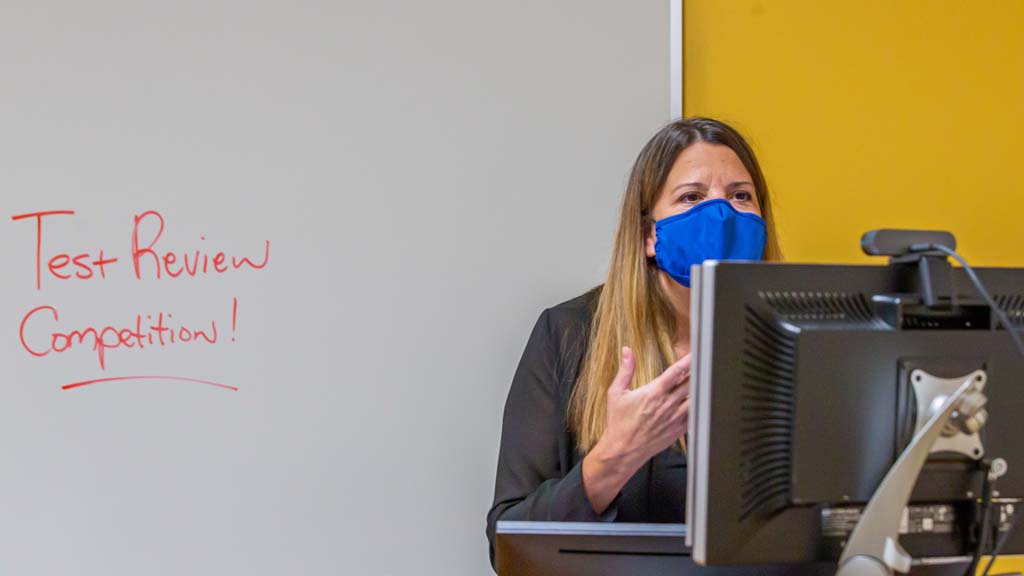
“I'm finding new ways to engage students in discussion. I took an assignment that was due over the weekend. And then I put a summary of it [on the board] and had people jump in to add their own discussion posts,” she says. Once back in class, she said she continued the discussion board live by picking from the posts and asking students to tell the class more.
“I've never had a classroom where you can look out the window. And it's no different on Zoom; you never know when I'm going to pull you in,” she says. “I think they’re getting the best of both worlds. I try to make sure they really perceive the value is as much, if not better than in a person-to-person [only] environment.”
Working Out Solutions
College of Engineering & Design Assistant Professor Nicholas DiFilippo, Ph.D., agrees with that sentiment and notes that teaching students during a pandemic is comparable to working out complex engineering problems.
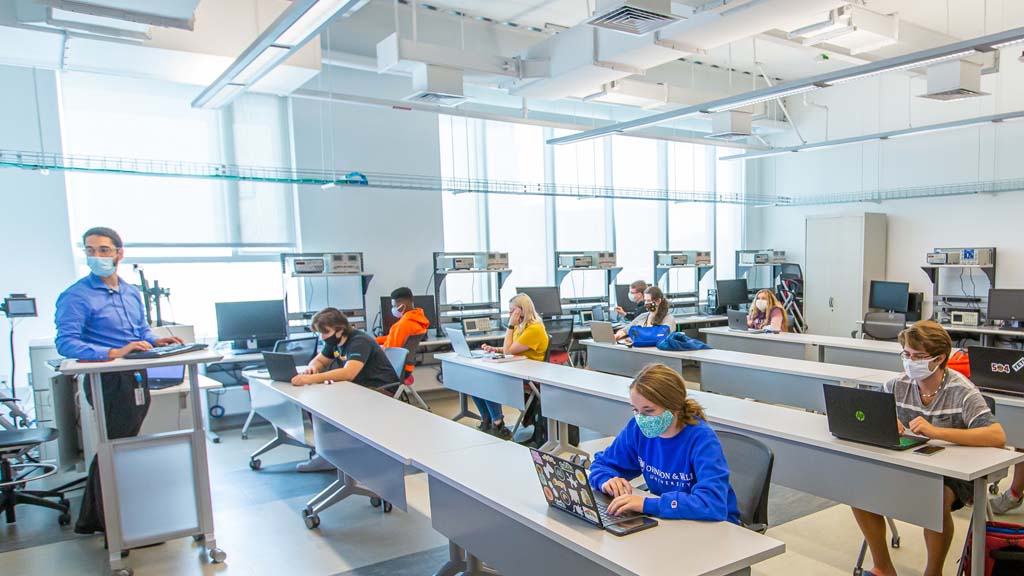
“This semester just highlights the fact [that] we need to be flexible in the methods we use to teach, especially right now,” he says. “[It’s about] not being afraid to try out something new if something isn’t working.”
DiFilippo, who started teaching at JWU a few months before Covid-19 forced everyone to stay at home, teaches four classes, two in person and two remotely. In his remote classes, he says both sessions are synchronous, but he will likely transition to screen sharing and recording in Zoom to stay inside the ulearn framework for ease. He’s set up multiple screens at home where he can view students, write notes and record himself teaching. In addition, DiFilippo now has access to a JWU-issued drawing tablet (perfect for illustrating and setting up complicated problems) he can use to teach from anywhere. In-person classes will be recorded as well, in case any student misses the live lecture. He adds that he’s also been making YouTube videos to share class content with his students.
“In a way, this is just like approaching any engineering problem,” he adds. “First, you have to look at and identify [the] problem, try out something that you think will solve it, analyze if what you have tried has worked or not, then make adjustments as needed to achieve better results.”
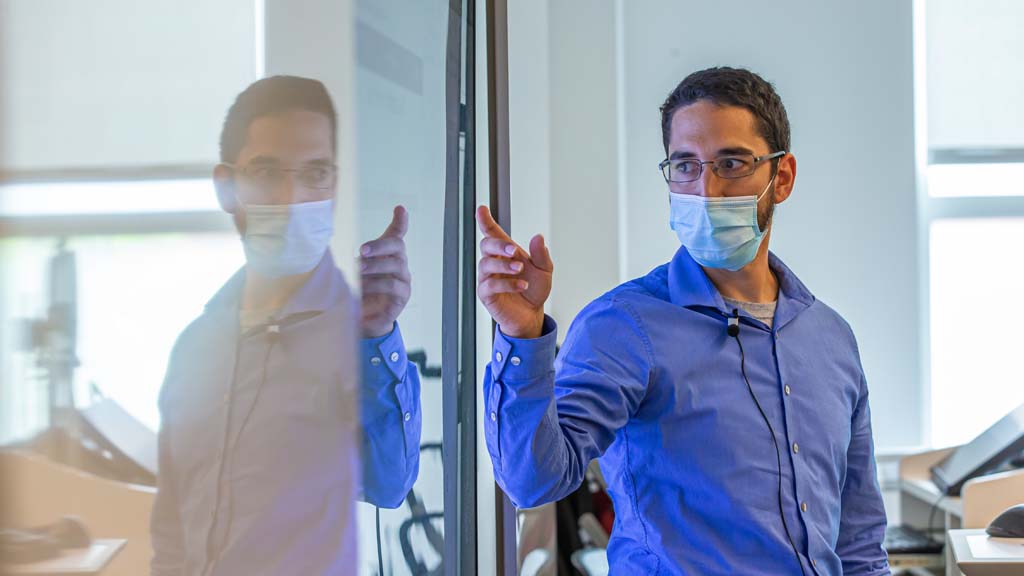
To communicate with his engineering students, DiFilippo has been using Discord, an app he says most students are already familiar with and where he is able to create a separate servers and channels by class. “This app also possesses screen and voice sharing capabilities with minimal lag between the video and the talking. Students also prefer messaging me with questions over Discord instead of email since they can see when I’m online or when I’m typing to them,” he says.
Building Lasting Change
All in all, students and faculty are adjusting well to the changes. Professor Karen Shea, Ph.D., who teaches both remote and face-to-face English classes at the John Hazen White College of Arts & Sciences, has decided to teach all of her classes synchronously.
“I’m running my classes much the same way as I would if we were face to face, using breakout rooms on Zoom for pair and group work, and having students share their screens in order to lead class discussions and give presentations,” she says.
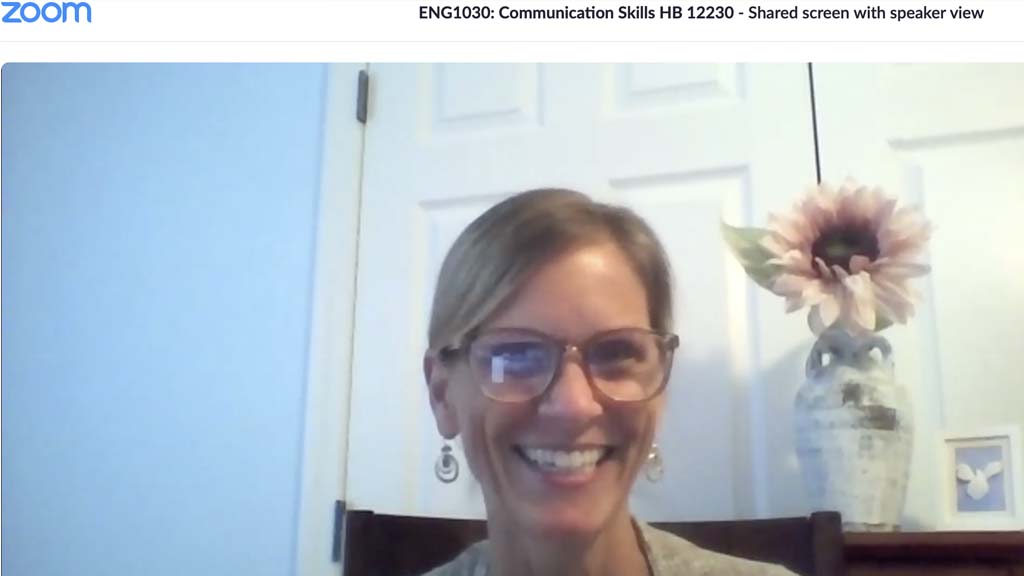
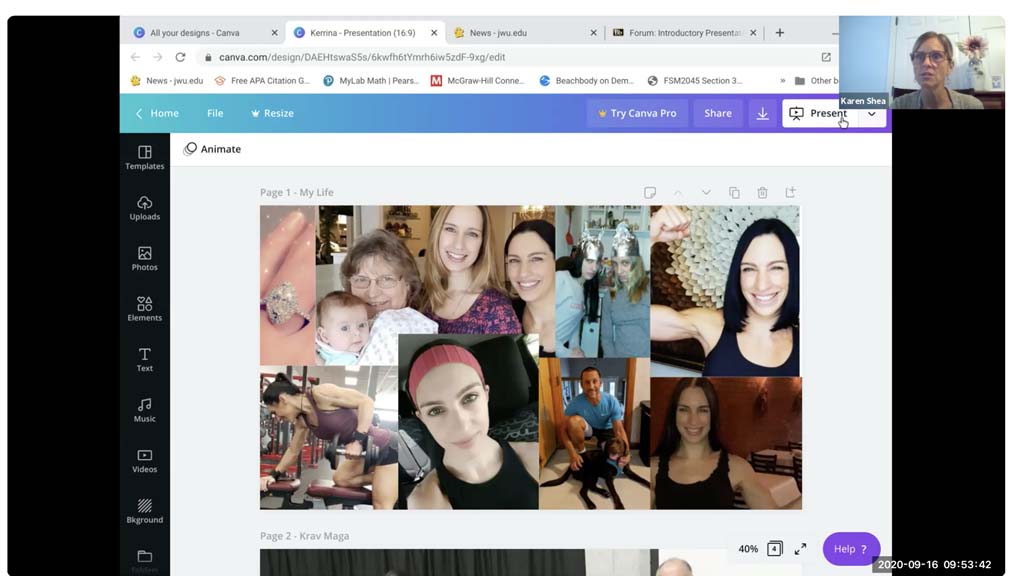
Things are going so well with this setup, that Shea is asking her face-to-face students to bring laptops and earphones to class so they can benefit from it as well. “This has enabled me to organize peer writing workshops and small group activities, which I often do in my writing and communication skills classes. I am not teaching a lecture-style class, so [Zoom] breakout rooms have been invaluable for me, since those students are not allowed to push their desks together or exchange papers.”
She adds that she does a lot of active learning with students, and this shift has added value to her classes. “I feel that it’s important for my students to be communicating with each other as often as possible,” she says.
Making a Positive Impact
Positive changes in the classrooms are the goal for JWU as a whole — and are already making an impact. In fact, just recently JWU Providence earned a $25,000 grant for its Alternative Academic Delivery Super User Program. The grant, received from the Davis Educational Foundation established by Stanton and Elisabeth Davis after Mr. Davis's retirement as chairman of Shaw's Supermarkets Inc., will be instrumental in helping JWU address any challenges brought on by the pandemic.
The Super User Program will enable Instructional Design & Technology (IDT) staff and designated faculty members to provide critical and just-in-time training in maximizing the use of ulearn, JWU’s branded Blackboard online learning management system (LMS). Through the program, selected faculty from each college who have been trained in, and demonstrate expertise with the ulearn LMS and remote teaching implementation, will mentor their colleagues in remote teaching. The funds will also support IDT staff so they can provide individualized and immediate support services to faculty members through an email hotline available in the evenings and on weekends, when course development tends to happen, increasing their nimbleness in the remote teaching environment.
Interviews for this story were conducted throughout September, before JWU announced students would temporarily be fully remote starting on October 5.
